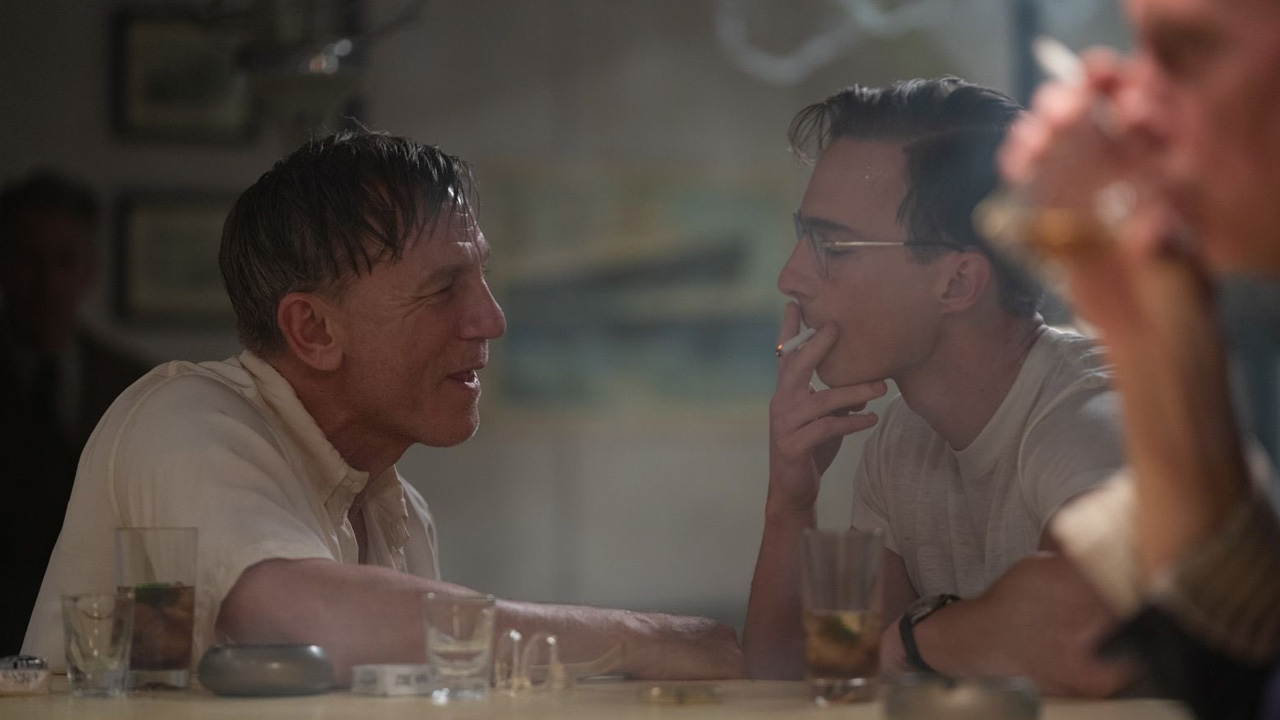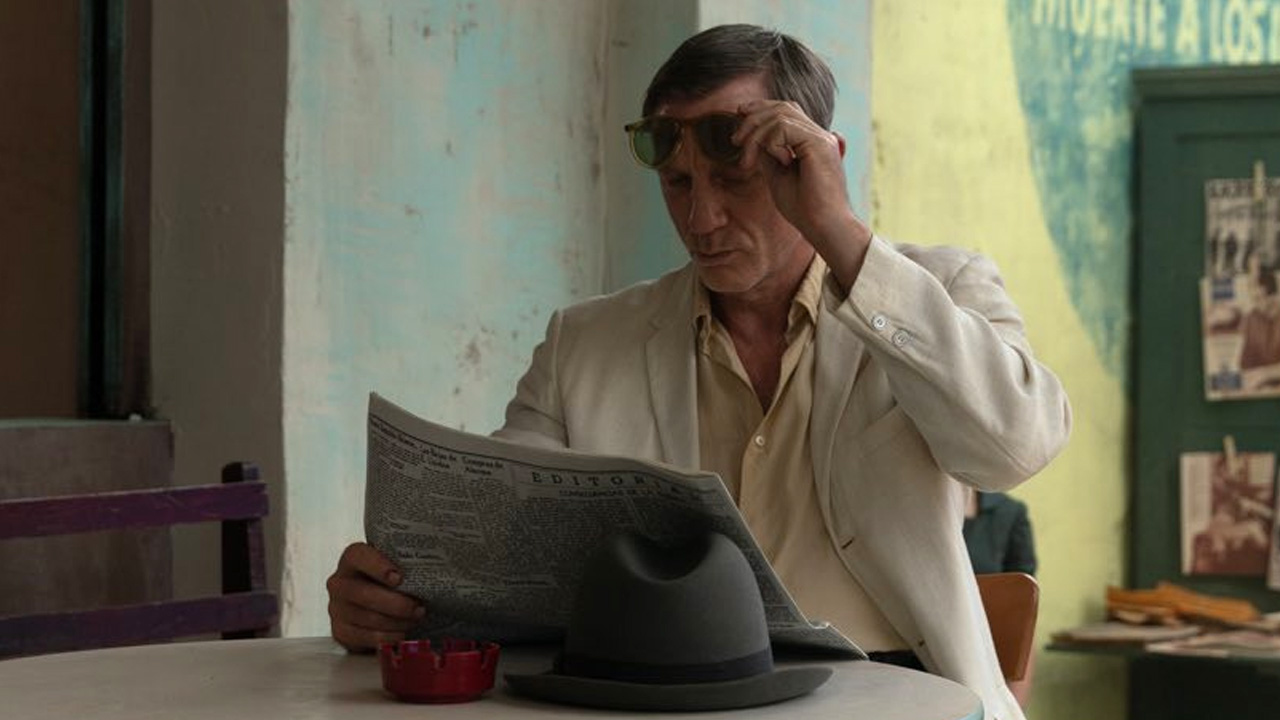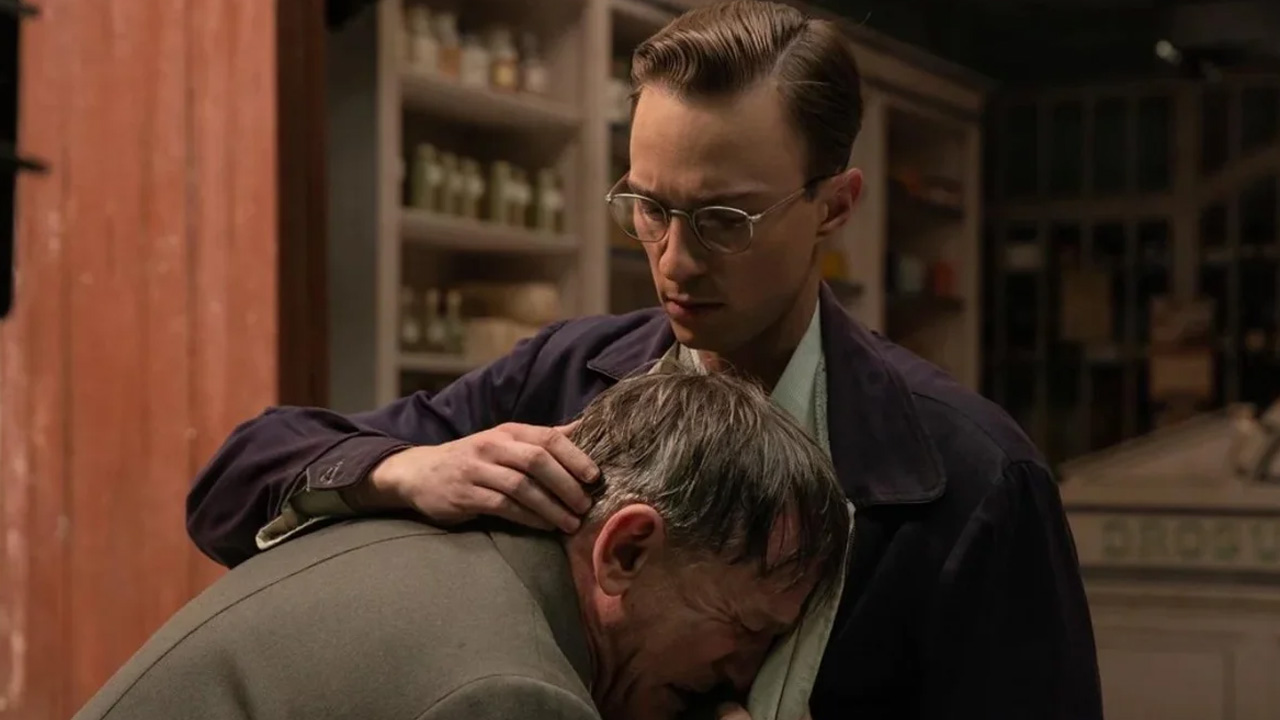Daniel Craig impresses in Queer, one of Luca Guadagnino’s most intimate works

Daniel Craig stars alongside Drew Starkey in William S. Burroughs adaptation Queer, Luca Guadagnino’s latest, which has just premiered at Venice Film Festival. As Rory Doherty reports from the fest, it’s an imperfect, arresting voyage into discomfort and euphoria.
A university friend of mine told me that William S. Burroughs was the only Beat Generation writer worth a damn, and as he was substantially more well-read than me, I took him on his word. The more you learn of Burroughs’ iconoclastic and complicated legacy, the easier such a claim is to swallow: his brand of postmodernism was a huge influence on subsequent decades of fiction, music, and cinema. His prose was nonlinear, experimental, and semi-autobiographical, drawing on his experience of addiction and homosexuality to write some of the most startling and enduring works of the past century.
Two of his novels have been adapted into major motion pictures: David Cronenberg’s cult favourite Naked Lunch, and now Luca Guadagnino’s Queer. Both focus on American drug addicts lying low outside of America, but where Cronenberg leant on Naked Lunch’s paranoid satire, pairing amusing body horror with Peter Weller’s deadpan, barely-moving-his-mouth performance, Guadagnino considers his version of Burrough’s text deeply personal, even an homage to the visually striking melodramas of Powell and Pressburger.
Daniel Craig is Lee, a gay man of “independent means” which means he’s wealthy enough to drink and dope himself to ruin in Mexico City, bouncing between random hotel hookups and unsuccessful bar seductions. When he meets ex-serviceman Eugene Allerton (Drew Starkey), Lee is instantly transfixed; under the dim gold light of Mexico City’s bars, Eugene’s sculpted build and ruthlessly handsome features look pristine, almost varnished. Craig spends most of Queer’s first act lurching between fawning, over-talkative infatuation and sharp spells of solemn, venomous self-loathing—the blatant, well-dressed soundstage sets give a theatrical backdrop for him to strut and shuffle along.

Calling Craig’s performance “physical” risks undermining the power of the film’s most explicit scenes, but the former Bond actor has always brought a heavy, weighty presence to his characters, whether he’s busying himself as the most violent 007 or indulging in the Southern hamminess of Benoit Blanc. Craig has an impressive grip on the blustery, slippery Lee, chewing his verbose and wounded dialogue for the right length of time. But the way he pets, touches, and presses himself onto his lover shows signs of shaky vulnerability, like Lee makes love in a state of withdrawal on the cusp of having his affections rebuffed.
Guadagnino is less proficient as a composer of images, but much better suited to framing movement, and this strength allows so much charged feeling to pour into Queer’s sex scenes—whether it’s fierce, empty pleasure or tenderly grasping a new lover like you risk falling off a cliff. Craig and Starkey are such unpredictable performers, and Guadagnino’s full-bodied, sometimes offbeat impulses for filming people in love underlines the sensitive nature of their passion.
Cinematographer Sayombhu Mukdeeprom, who most recently shot Challengers and Trap, and frequent Guadagnino editor Marco Costa bring a sharp, direct energy to the film, as we’re immersed in the hazy, compressed timeline of Lee’s perspective. To add texture to Lee’s two deepest urges—Eugene and opiates—Guadagnino eschews Trent Reznor and Atticus Ross’ reliably strong score at key moments, dropping Nirvana’s Come As You Are and New Order’s Leave Me Alone to draw attention to the twin energies of attraction and repulsion coursing through the character. These anachronistic soundtrack choices have deeper meaning—Kurt Cobain and Joy Division frontman Ian Curtis both considered Burroughs a literary hero.

Eugene is just as legible as the object of an unstable person’s obsession should be—as in, it’s hard to get a good read on him. He’s transparent in his aloofness, his shifting desires, and how plainly he looks down on his older suitor. But Starkey makes sure Eugene remains enigmatic, enough to keep him just out of our grasp. We see, through Lee’s eyes, the young servicemen as a pendulum in suspended animation, ready to swing decisively towards definitive answers to Lee’s vain, searching questions. Does Eugene’s queerness live up to what Lee wants it to be? Is his sporadically-shown desire towards Lee genuine and lasting?
The answers Lee wants elude much of Queer’s 2 hour-plus runtime (it’s been edited down by about an hour since first announced at Venice Film Festival), which is probably why he becomes gripped by the rumoured telepathic properties of the South American plant yage (better known as the psychoactive Indigenous beverage ayahuasca), just so he can have some certainty of how his paramour regards him.
It builds to a heightened and loose final act in the rainforest (hello Lesley Manville) that loses a shade of the eroticism and anguish coursing through the preceding city-set two-thirds. Still, it’s largely won back in the end, thanks to a choreographed climax complete with stretchy CG and overwrought imagery (I mean both descriptions positively). Just when we thought we were done, Guadagnino traps us in an epilogue that moves with textbook surrealism and a patient poise that spells out the gnawing, fatalistic tension of Lee’s final steps. It’s all a fitting closing stretch for one of Guadagnino’s most beguilingly intimate works to date—an imperfect, arresting voyage into discomfort and euphoria.


















